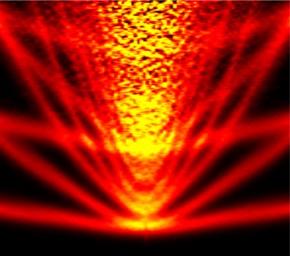
The study of strongly correlated electronic systems and the development of quantum transport in nanoelectronic devices have followed distinct, mostly non-overlapping paths. Electronic correlations of complex materials lead to emergent properties such as superconductivity, magnetism, and Mott insulator phases. Nanoelectronics generally starts with far simpler materials (e.g., carbon-based or semiconductors) and derives functionality from doping and spatial confinement to two or fewer spatial dimensions. In the last decade, these two fields have begun to overlap. The development of new growth techniques for complex oxides have enabled new families of heterostructures which can be electrostatically gated between insulating, ferromagnetic, conducting and superconducting phases. In my own research, we use a scanning probe to “write” and “erase” conducting nanostructures at the LaAlO3/SrTiO3 interface. The process is similar to that of an Etch-a-Sketch toy, but with a precision of two nanometers. A wide variety of nanoscale devices have already been demonstrated, including nanowires, nanoscale photodetectors, THz emitters and detectors, tunnel junctions, diodes, field-effect transistors, single-electron transistors, superconducting nanostructures and quantum point contacts. These building blocks may form the basis for novel technologies, including a platform for complex-oxide-based quantum computation and quantum simulation.

